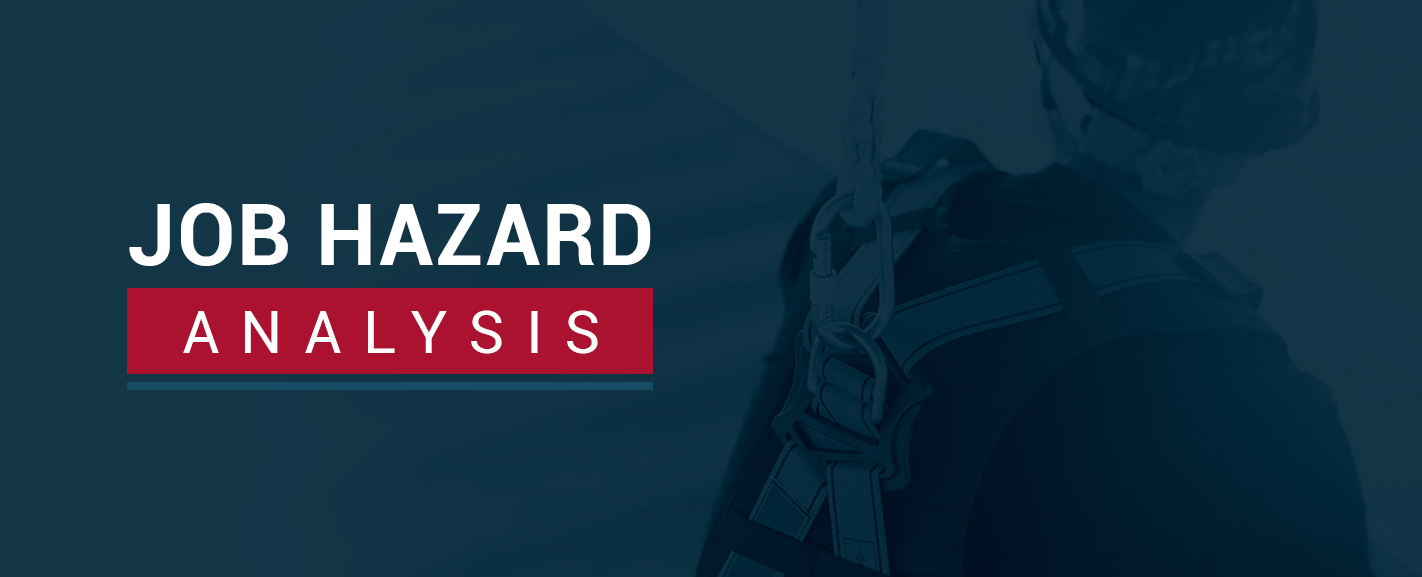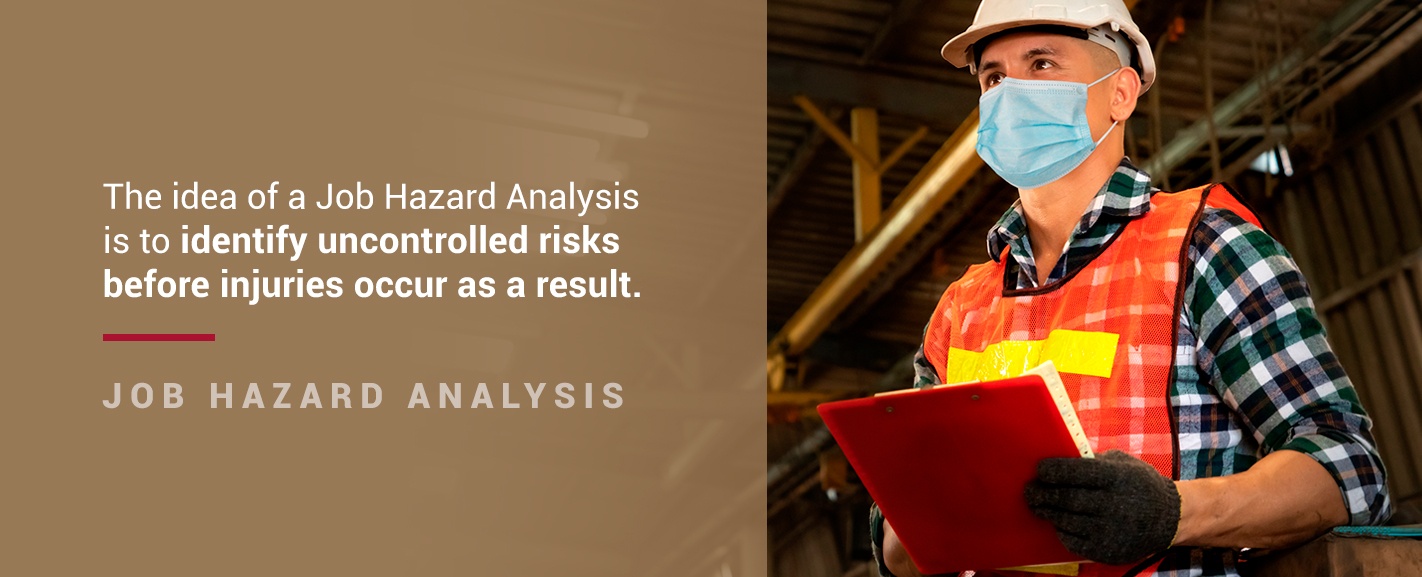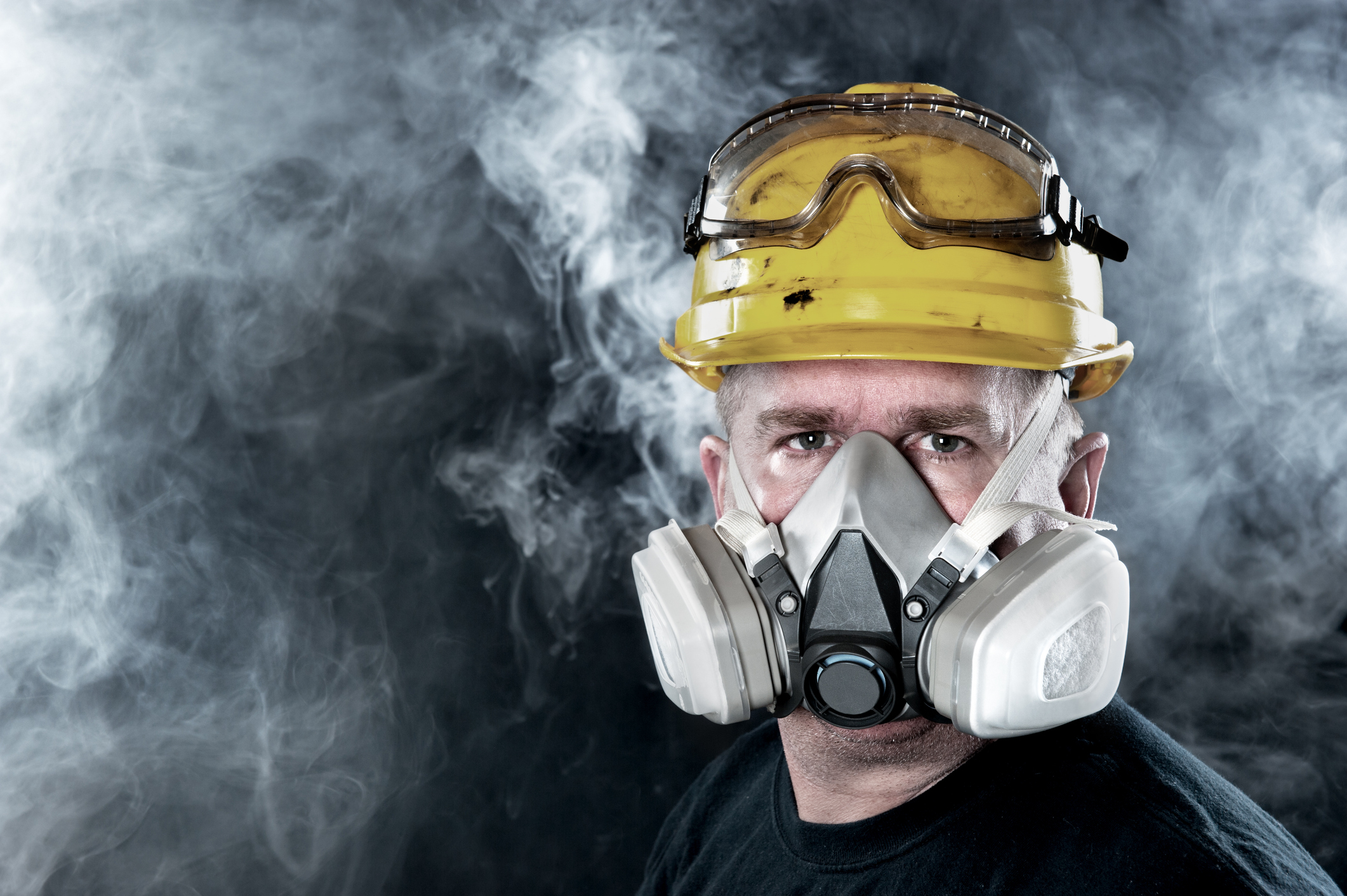Job Hazard Analysis

Jump To:
- What Is Considered a Hazard?
- What Is a Job Hazard Analysis?
- Why Is Job Hazard Analysis Important?
- Job Hazard Analysis (JHA) Course Details
- Job Hazard Analysis Specialist Course
On average, more than 100 workers died on the job every week in 2018. To prevent deaths, injuries and illnesses in your workplace, you first have to know what hazards pose those threats. That’s where a Job Hazard Analysis, also called a Job Safety Analysis, comes in. At the most fundamental level, a Job Hazard Analysis helps you identify hazards and determine how to remove or control them.
The procedure is crucial in any workplace to create safer, more productive conditions. Moreover, the hazard communication standard is the second most frequently cited Occupational Safety and Health Administration (OSHA) violation. To properly communicate with employees about the potential chemical or physical dangers they face at work, you must first know what they are. An effective Job Hazard Analysis can do this and involve employees in the process, contributing to a robust safety culture.
Job Hazard Analysis Specialist Online Course
What Is Considered a Hazard?
A hazard is any potential for harm. Risks exist when work conditions or activities may result in injury, illness or death. According to the OSHA hierarchy of hazard controls, the first action to take is to eliminate any hazard or replace a hazardous condition with a less dangerous one. If removing it is impossible, you can introduce controls to reduce the risk of harm. Either way, to remove or control risk, you first have to know what hazards exist in your workplace.
Hazards can vary significantly from workplace to workplace. Here is a list of the hazards OSHA recognizes:
- Corrosive, toxic, flammable or explosive chemicals
- Explosions
- Electrical shocks, fires or static
- Loss of power to safety-critical equipment
- Ergonomic strains
- Error-provocative equipment, designs or procedures
- Soil collapse in an excavation site
- Falls, trips and slips
- Fire or heat
- Mechanical vibration
- Mechanical failure
- Body parts exposed to or caught between crushing, cutting, tearing or shearing tools and other equipment
- Noise
- Radiation
- Objects or projectiles that may strike employees
- Person-initiated activities that result in a part of the body coming into contact with a surface
- Extreme temperatures
- Visibility
- Weather, such as snow, rain, wind, ice or sun
What Is a Job Hazard Analysis?
A Job Hazard Analysis is a formal set of steps for identifying hazards and hazardous jobs in your workplace. The idea is to identify uncontrolled risks before injuries occur as a result. You must look at the relationship between the worker, the task, the tools and the work conditions to identify the areas where injuries or accidents may happen. Once a Job Safety Analysis is complete, you can take steps to remove threats altogether or reduce the risk as much as possible.
The steps in an OSHA Job Hazard Analysis include:
- Talk to your team: The people who perform the jobs every day have a unique insight into where the accidents and injuries are likely to occur. Involving your employees can reduce oversights and create a higher quality analysis. It can also give your employees more ownership over workplace safety, making them more receptive to solutions.
- Select jobs to analyze: Look at the company’s accident, injury and near-miss records to determine which tasks to analyze. Also, look at roles with a high potential for severe injury or illness or where a simple error can cause an accident. Newly-created jobs and procedures or jobs that require written instructions may also have hazards to consider.
- Define the role: Distill the duties of the job into a short, descriptive set of steps. Watch workers in action and discuss their standard procedures to make sure you don’t miss any crucial steps.
- Look for hazards: Consider how each step can lead to a potential injury. Ask yourself what could go wrong and how likely it is for an accident to occur. Discuss the hazards with your employees and brainstorm ways to resolve them. If you discover any risks posing an immediate danger, take action right away to protect the workers. Do not wait to complete your analysis before introducing controls if you find any hazards that are easy to solve.
- Set priorities: Once you’ve identified all the hazards you can, list them in order of likelihood to occur and those with the most severe consequences. Prioritize finding solutions for the most significant dangers first.
Purchase Job Hazard Analysis Training
Why Is Job Hazard Analysis Important?
Workers all over the country face potential injuries and deaths every day. Increasing the level of job safety can add years to your workers’ lives and create value for your business. Safe workers are more productive, happier and more likely to stay with a company. A thorough Job Safety Analysis is one critical component of a comprehensive workplace safety program. It demonstrates a commitment to safety and health and can form the basis for a more robust safety culture throughout your company.
A Job Hazard Analysis takes a systematic approach to uncover hazards, so you have the best chance of preventing deaths or injuries. By controlling the dangers you find through the analysis, you can:
- Reduce the number of worker injuries and illnesses.
- Lower the number of missed workdays due to injuries and illnesses.
- Create more useful work methods and procedures.
- Reduce workers’ compensation costs.
- Boost worker productivity.
- Create more informative training.
Job Hazard Analysis (JHA) Course Details
At the National Association of Safety Professionals (NASP), we offer several resources to teach you how to conduct Job Safety Analyses for your workplace. With our courses, you can complete Job Hazard Analysis training online.
Job Hazard Analysis Specialist Certificate
If you’re looking to sharpen your skills and advance your career as an Environmental Health and Safety (EHS) professional, a Job Hazard Analysis course with a certificate track can help. NASP’s JHA specialist certificate offers an accredited course and certificate worth 1.3 Continuing Education Units (CEUs). The course will cover:
- Recognizing hazardous workplace conditions.
- Teaching others about the types of injuries that can occur due to particular hazards.
- Conducting a Job Hazard Analysis step-by-step.
- Calculating risks by weighing hazards’ frequency, probability and severity.
- Understanding Acceptable Risk and the Residual Risk Reduction Method.
- Prioritizing high-risk jobs and their associated hazards to eliminate hazards proactively.
- Using the What-If and HAZOP techniques for evaluating the processes for hazardous chemicals.
Job Hazard Analysis Basic Safety Training
Need JHA training for your employees? Take a look at our basic Job Hazard Analysis training course which will teach them the fundamentals. In this course, your employees learn:
- Risk analysis and matrices.
- Job prioritization.
- JHA steps.
- Identifying job hazards.
- Implementing controls.
Purchase the Job Hazard Analysis Specialist Course
Get started with a dynamic, online learning course that can teach you what you need to know and help it stick. We take an innovative approach to Job Hazard Analysis training and continuing professional education for EHS professionals. The NASP training method is effective and International Association of Continuing Education (IACET) accredited.
Learn Job Hazard Analysis and certify your skills by purchasing the Job Hazard Analysis Specialist course today. Or, if you need JHA training for your employees the condensed version, consider our Job Hazard Analysis Basic Training.
Blog Posts
Latest Posts
Related Posts






